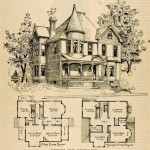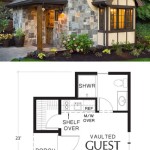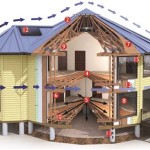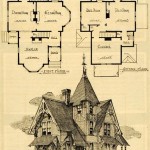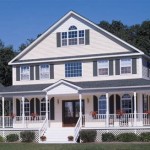Craftsman house floor plans, characterized by their emphasis on natural materials, open floor plans, and built-in cabinetry, embody the principles of the Arts and Crafts movement. These floor plans prioritize functionality and simplicity, creating warm and inviting living spaces.
Inspired by the work of architects like Frank Lloyd Wright and Gustav Stickley, Craftsman house floor plans are designed to seamlessly blend with their surroundings. Their open and airy layouts promote natural light and ventilation, while their use of natural materials, such as wood, stone, and brick, fosters a connection with nature.
With their practical and visually appealing designs, Craftsman house floor plans continue to be popular choices for homeowners seeking a balance between comfort and style. In this article, we will delve deeper into the essential features, design principles, and benefits of Craftsman house floor plans, providing insights into their enduring appeal.
Here are 10 important points about Craftsman house floor plans:
- Open floor plans
- Built-in cabinetry
- Natural materials
- Wide porches
- Tapered columns
- Exposed rafters
- Fireplaces
- Arts and Crafts details
- Functional and stylish
- Enduring appeal
These features combine to create warm and inviting living spaces that are both practical and visually appealing.
Open floor plans
Open floor plans are a defining characteristic of Craftsman houses. They create a spacious and airy feel, and allow for a more flexible use of space. The kitchen, dining room, and living room are often combined into one large space, which can be divided into separate areas with furniture or rugs. This type of floor plan is ideal for families who like to spend time together, as it encourages interaction and communication.
Open floor plans also make it easier to entertain guests. With no walls to separate the different areas of the house, guests can easily mingle and move around. This type of floor plan is also ideal for people who like to cook and entertain at the same time, as it allows them to be part of the conversation while they are preparing food.
In addition to being more spacious and flexible, open floor plans can also be more energy-efficient. With no walls to block the flow of air, heat can circulate more easily throughout the house. This can lead to lower heating and cooling costs.
Open floor plans are not without their drawbacks, however. One potential downside is that they can be more difficult to keep clean and organized. With no walls to separate the different areas of the house, clutter can easily spread from one area to another. Additionally, open floor plans can be less private than traditional floor plans. With no walls to block sound, noise can travel more easily throughout the house.
Overall, open floor plans offer a number of advantages, including increased space, flexibility, and energy efficiency. However, it is important to weigh these advantages against the potential drawbacks before deciding if an open floor plan is right for you.
Built-in cabinetry
Built-in cabinetry is another defining characteristic of Craftsman houses. It is both functional and stylish, and it can be used to create a variety of different looks. Built-in cabinetry can be used to create storage space, display items, or even to divide a room into different areas.
- Storage
Built-in cabinetry can be used to create a variety of different storage solutions. For example, it can be used to create bookcases, cabinets, drawers, and shelves. This type of cabinetry is ideal for storing items that you want to keep organized and out of sight. - Display
Built-in cabinetry can also be used to display items. For example, it can be used to create display cases for collections, artwork, or other items that you want to showcase. This type of cabinetry can help to create a focal point in a room and add personality to your home. - Room dividers
Built-in cabinetry can also be used to divide a room into different areas. For example, it can be used to create a partition between the living room and dining room, or between the kitchen and family room. This type of cabinetry can help to create a more intimate and cozy feel in a large room. - Arts and Crafts details
Built-in cabinetry in Craftsman houses often features Arts and Crafts details, such as Mission-style hardware, beveled glass doors, and tapered legs. These details add to the overall charm and character of the house.
Built-in cabinetry is a versatile and stylish way to add storage, display space, and room dividers to your home. It is a defining characteristic of Craftsman houses, and it can help to create a warm and inviting living space.
Natural materials
Craftsman houses are known for their use of natural materials, both inside and out. This includes wood, stone, brick, and glass. These materials are chosen for their beauty, durability, and ability to create a warm and inviting atmosphere.
Wood
Wood is the most common material used in Craftsman houses. It is used for everything from the framing of the house to the siding, trim, and flooring. Craftsman houses often feature exposed beams and rafters, which add to the rustic charm of the home. The type of wood used will vary depending on the region, but popular choices include oak, redwood, and cedar.
Stone
Stone is another popular material used in Craftsman houses. It is often used for the foundation of the house, as well as for chimneys, fireplaces, and patios. Stone adds a touch of elegance and sophistication to a Craftsman home. Popular choices for stone include granite, limestone, and sandstone.
Brick
Brick is a durable and versatile material that is often used for the exterior of Craftsman houses. It can be used to create a variety of different looks, from traditional to modern. Brick is also a relatively low-maintenance material, making it a good choice for busy families.
Glass
Glass is used extensively in Craftsman houses, both for windows and doors. Large windows allow for plenty of natural light to enter the home, creating a bright and airy atmosphere. Craftsman houses often feature stained glass windows, which add a touch of color and personality to the home.
The use of natural materials in Craftsman houses helps to create a warm and inviting atmosphere. These materials are durable and easy to maintain, making them a good choice for families. Natural materials also help to connect the home to its surroundings, creating a sense of harmony and balance.
Wide porches
Wide porches are a defining characteristic of Craftsman houses. They provide a welcoming and inviting space to relax and enjoy the outdoors. Porches can be used for a variety of activities, such as reading, dining, or simply enjoying the fresh air. They can also be used to extend the living space of the home, creating a seamless transition between the indoors and outdoors.
Craftsman porches are typically wide and deep, with plenty of room for furniture and seating. They often feature exposed beams and rafters, which add to the rustic charm of the home. The porch roof is usually supported by tapered columns, which give the porch a distinctive look. Porches may also feature built-in benches or seating, creating a cozy and inviting space to relax.
In addition to being a great place to relax and enjoy the outdoors, porches can also serve a practical purpose. They can provide shelter from the sun and rain, and they can also help to keep the house cool in the summer. Porches can also be used to store items such as bicycles, gardening tools, or firewood.
Wide porches are a beautiful and functional addition to any Craftsman home. They provide a welcoming space to relax and enjoy the outdoors, and they can also help to extend the living space of the home. If you are looking for a home with a porch that is both stylish and functional, a Craftsman house is a great option.
Tapered columns
Tapered columns are a defining characteristic of Craftsman houses. They are typically made of wood, and they feature a wider base than top. This gives them a distinctive look that is both elegant and rustic.
- Structural support
Tapered columns provide structural support for the porch roof. They are designed to bear the weight of the roof and any additional weight that may be placed on it, such as furniture or people. - Aesthetic appeal
Tapered columns are also an important design element. They add a touch of elegance and sophistication to a Craftsman home. The tapered shape of the columns creates a visually appealing effect that is both eye-catching and timeless. - Craftsman details
Tapered columns often feature Craftsman details, such as decorative capitals and bases. These details add to the overall charm and character of the home. Tapered columns can also be painted or stained to match the exterior of the home. - Versatility
Tapered columns are a versatile design element that can be used in a variety of ways. They can be used to support a porch roof, a pergola, or even a simple awning. Tapered columns can also be used to create a decorative accent on the exterior of a home.
Tapered columns are a beautiful and functional addition to any Craftsman home. They provide structural support, aesthetic appeal, and versatility. If you are looking for a way to add a touch of Craftsman style to your home, tapered columns are a great option.
Exposed rafters
Exposed rafters are a common feature in Craftsman houses. They add a rustic and charming touch to the home, and they can also help to create a more spacious and airy feel. Exposed rafters are typically made of wood, and they can be either natural or stained to match the rest of the home’s interior.
- Structural support
Exposed rafters provide structural support for the roof of the house. They are designed to bear the weight of the roof and any additional weight that may be placed on it, such as snow or wind. Exposed rafters are typically made of strong and durable wood, such as oak or pine. - Aesthetic appeal
Exposed rafters are also an important design element. They add a touch of rustic charm to a Craftsman home. The exposed rafters create a visually appealing effect that is both eye-catching and timeless. Exposed rafters can also be painted or stained to match the rest of the home’s interior. - Craftsman details
Exposed rafters often feature Craftsman details, such as decorative corbels and brackets. These details add to the overall charm and character of the home. Exposed rafters can also be used to create a variety of different looks, from traditional to modern. - Versatility
Exposed rafters are a versatile design element that can be used in a variety of ways. They can be used to create a more spacious and airy feel in a room, or they can be used to add a touch of rustic charm. Exposed rafters can also be used to create a variety of different looks, from traditional to modern.
Exposed rafters are a beautiful and functional addition to any Craftsman home. They provide structural support, aesthetic appeal, and versatility. If you are looking for a way to add a touch of Craftsman style to your home, exposed rafters are a great option.
Fireplaces
Fireplaces are a common feature in Craftsman houses. They provide a warm and inviting focal point for the home, and they can also be used to heat the home during the winter months. Craftsman fireplaces typically feature a simple and understated design, with a focus on natural materials such as stone, brick, and wood.
One of the most distinctive features of Craftsman fireplaces is their use of stone or brick. Stone fireplaces are often made of granite or limestone, and they typically feature a rough-hewn texture that adds to the rustic charm of the home. Brick fireplaces are also popular, and they can be made of either red or brown brick. Brick fireplaces often feature a more formal look than stone fireplaces, but they are still in keeping with the overall Craftsman aesthetic.
Another common feature of Craftsman fireplaces is their use of wood. Wood is often used for the mantel and surround of the fireplace, and it can also be used to create built-in benches or seating areas. Wood adds a warm and inviting touch to the fireplace, and it helps to create a cozy and comfortable atmosphere in the home.
Craftsman fireplaces often feature decorative details such as tile or metalwork. Tile is often used to create a decorative border around the fireplace, and it can also be used to create a hearth or firebox. Metalwork is often used to create decorative accents such as andirons or fire grates. These details add a touch of elegance and sophistication to the fireplace, and they help to create a truly unique and personal space.
Fireplaces are a beautiful and functional addition to any Craftsman home. They provide a warm and inviting focal point for the home, and they can also be used to heat the home during the winter months. If you are looking for a way to add a touch of Craftsman style to your home, a fireplace is a great option.
Arts and Crafts details
Craftsman houses are known for their Arts and Crafts details, which add a touch of elegance and sophistication to the home. These details can be found both inside and outside the home, and they include everything from built-in cabinetry to stained glass windows.
- Built-in cabinetry
Built-in cabinetry is a common feature in Craftsman houses. It is both functional and stylish, and it can be used to create a variety of different looks. Built-in cabinetry can be used to create storage space, display items, or even to divide a room into different areas. Craftsman built-in cabinetry often features Mission-style hardware, beveled glass doors, and tapered legs.
- Stained glass windows
Stained glass windows are another popular Arts and Crafts detail. They add a touch of color and personality to the home, and they can also be used to create a more private space. Craftsman stained glass windows often feature geometric patterns and natural motifs, such as flowers and leaves.
- Tilework
Tilework is often used in Craftsman houses, both inside and outside the home. It can be used to create decorative borders around fireplaces, windows, and doors. Tilework can also be used to create a more durable and easy-to-clean surface in areas such as the kitchen and bathroom. Craftsman tilework often features geometric patterns and earth tones.
- Metalwork
Metalwork is also a popular Arts and Crafts detail. It can be used to create decorative accents such as andirons, fire grates, and light fixtures. Metalwork can also be used to create more functional items such as door handles and hinges. Craftsman metalwork often features simple and understated designs.
Arts and Crafts details add a touch of elegance and sophistication to Craftsman houses. These details can be found both inside and outside the home, and they include everything from built-in cabinetry to stained glass windows. If you are looking for a way to add a touch of Craftsman style to your home, Arts and Crafts details are a great option.
Functional and stylish
Craftsman house floor plans are not only beautiful, but they are also functional. The open floor plan allows for a more flexible use of space, and the built-in cabinetry provides ample storage space. The wide porches and large windows let in plenty of natural light, creating a bright and airy atmosphere. And the fireplaces provide a warm and inviting focal point for the home.
In addition to being functional, Craftsman house floor plans are also stylish. The natural materials, such as wood, stone, and brick, give the home a warm and inviting feel. The exposed rafters and beams add a touch of rustic charm, while the Arts and Crafts details add a touch of elegance and sophistication.
One of the most functional aspects of Craftsman house floor plans is the open floor plan. This type of floor plan allows for a more flexible use of space, as it can be easily reconfigured to meet the changing needs of the family. For example, the living room and dining room can be combined to create a large space for entertaining, or the kitchen can be opened up to the family room to create a more casual space for everyday living.
Another functional aspect of Craftsman house floor plans is the built-in cabinetry. This type of cabinetry is both stylish and functional, as it provides ample storage space without taking up too much room. Built-in cabinetry can be used to store a variety of items, such as books, dishes, and clothing. It can also be used to create a more organized and efficient space.
Enduring appeal
Craftsman house floor plans have endured in popularity for over a century due to their timeless design, functionality, and versatility. Here are a few reasons for their enduring appeal:
- Timeless design
Craftsman house floor plans feature a simple and understated design that has stood the test of time. The natural materials, such as wood, stone, and brick, give the home a warm and inviting feel. The exposed rafters and beams add a touch of rustic charm, while the Arts and Crafts details add a touch of elegance and sophistication. This timeless design appeals to a wide range of people, and it is sure to remain popular for years to come.
- Functionality
Craftsman house floor plans are not only beautiful, but they are also functional. The open floor plan allows for a more flexible use of space, and the built-in cabinetry provides ample storage space. The wide porches and large windows let in plenty of natural light, creating a bright and airy atmosphere. And the fireplaces provide a warm and inviting focal point for the home. This functionality makes Craftsman house floor plans a great choice for families of all sizes.
- Versatility
Craftsman house floor plans are also versatile, as they can be adapted to a variety of needs. For example, a Craftsman house can be a single-family home, a multi-family home, or even a commercial building. The open floor plan allows for a variety of different configurations, making it easy to customize the home to meet the specific needs of the owner. This versatility makes Craftsman house floor plans a great choice for a wide range of people.
- Affordability
Craftsman house floor plans are also relatively affordable to build and maintain. The simple design and use of natural materials help to keep the costs down. And the open floor plan allows for more efficient use of space, which can also save money on construction costs. This affordability makes Craftsman house floor plans a great option for first-time homebuyers and families on a budget.
Overall, Craftsman house floor plans have endured in popularity for over a century due to their timeless design, functionality, versatility, and affordability. These floor plans are a great choice for families of all sizes and budgets, and they are sure to remain popular for years to come.










Related Posts

